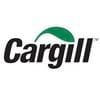Improving cow health fertility and milk quality with fat supplementation


AVR KUMAR
Suggest you use linseed oil source, which will help to improve milk fat, fatty acid profile of the milk and also help improve fertility.
.
If required you may contact us for your requirement of linseed oil based product, which is proven.

Dr.FAYAZ.AHMAD SHEIKH
I do not understand what you mean by reducing fertility. On digestibility, we have not experienced any reduction. When the fish oil is absorbed in a fibre matrix it escapes rumen metabolism since the particles are less than 2mm and not retained for long in the rumen plus anything that stays is released slowly so no negative impact. At least that is our experience with cows averaging 33 litres and above all year round.
Joe Magadi How to avoid the smell of fish in the milk produced from cows fed on fish oil?
Thank you.
The type of carbohydrate in the feed (starch, glucose, maltose, sucrose, etc.) may affect liver metabolism and fat metabolism. For example;
In cases where more fatty acids or carbohydrates are present immediately as fuel, VLDL is also made from endogenous triglycerides synthesized from fatty acids or carbohydrates in the liver and delivered to the blood.
If lipoprotein synthesis in the liver is inhibited by a variety of factors, endogenous triglycerides accumulate in the liver and a condition called liver fattening may occur.
This is a simple function related to the behavior of fat in the diet.
While one nutrient increases in the ration, such as the hourglass, the others will decrease.
Adverse effects of liver function and adiposity will affect cow's health, fertility and milk yield.

It is well known and understood that supplementation of bypass fat, especially during the early stage of lactation when the milch animals are in negative energy balance, helps improving milk quality, quantity as well as fertility. Of course, the blend of fatty acids in bypass fat is critical.
But I would like to mention here the important role played by rumen protected Omega fatty acids in improving reproduction in dairy animals. During the research work conducted by us, it was found that the dairy cows under field conditions suffering from anestrous and didn't conceive for more than 6-8 months when fed a blend of rumen protected Omega 3 and Omega 6 fatty acids, more than 85% cows conceived in a period of 8-10 weeks.








.jpg&w=3840&q=75)










